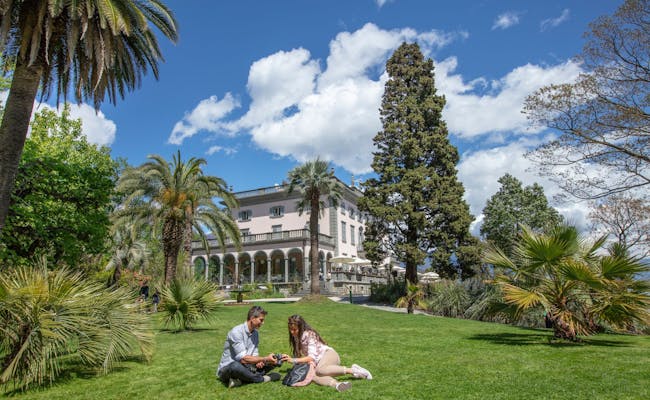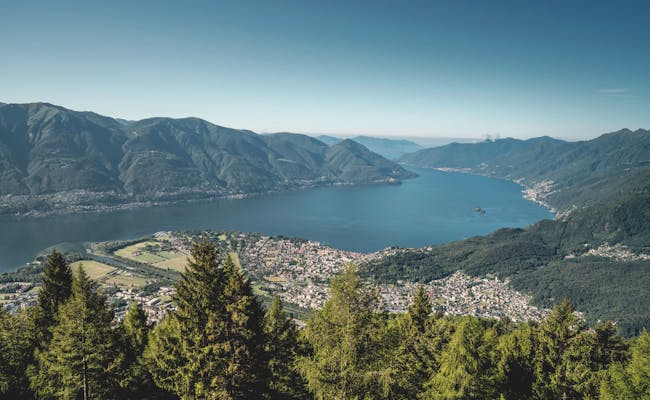
Ticket
Boat trip Brissago Islands - Ticket from Ascona
booked 81 times

4 Activities
Filter
Better than 4.5 stars
Better than 4 stars
Better than 3.5 stars
Better than 3 stars
No Rating

Ticket
booked 81 times

Ticket
booked 119 times
Why book with Swiss Activities?

Ticket
booked 63 times

Ticket
booked 47 times

Ticket
booked 81 times

Ticket
booked 119 times
Why book with Swiss Activities?

Ticket
booked 63 times

Ticket
booked 47 times


The Brissago Islands are located in the Swiss part of Lake Maggiore between Brissago and Ascona.
You will find sights on the larger of the two islands in particular. It is called Isola Grande, but is also known as Isola di San Pancrazio. Only it is open to visitors.
The smaller island is left in its natural state and has various names. It is called Isola Piccola, Isola di Sant'Apollinare, Isola dei Conigli or simply Isolino. It is not open to visitors. You can only admire it from a boat or from the Isola Grande. It is home to a Romanesque church called Sant'Apollinare.
The architecture of Villa Emden is neoclassical. The cool marble is enlivened by a number of flowering and fragrant trees and plants. You can eat and/or spend the night here in this great atmosphere, just as you like.
In the botanical garden you will find around 2000 different plant species. You can travel the continents here over an area of 2.5 hectares. Signposts tell you how far away these countries are, for example South Africa is 8958 km away.


Boats to the Brissago Islands depart from these docks at the Lake Maggiore:
From the end of March to the end of October, you can visit the islands multiple times a day, hop off, and catch a later boat. During the winter months, the Brissago Islands are closed to the public.
The climate on the Brissago Islands is subtropical. The two islands have the warmest climate in the whole of Switzerland and geographically belong to Insubria. This is the region between the pre-Alpine lakes and the Po. In ancient times, the area was inhabited by the Insubrians, a Celtic tribe.
This is why the Isole di Brissago is also referred to as having an Insubrian climate. In addition to many hours of sunshine, there are just as many hours of rain here. The average annual temperature is 14°C. Thanks to the warm climate on both islands, a wide variety of palm trees and other woody plants grow here that would otherwise not grow at these latitudes.


The Romans already appreciated the beauty of the Brissago Islands, and of course, their special climate. Archaeological finds have confirmed this.
In the Middle Ages, two churches stood on the islands. In the 19th century, a German-Russian baroness began to create beautiful gardens on the larger of the two islands. Even then, the first subtropical plants arrived on the Isola di San Pancrazio. In 1927, the German millionaire Max Emden purchased the two islands and had the buildings and gardens redesigned. He had the current neoclassical villa built and added an orangery and a Roman bath. His son eventually sold the islands to the region of Ticino.
The only way to get to the Brissago Islands is by boat. The direct approach from Porto Ronco in the village of Ronco sopra Ascona is about 1 km long and takes 10 minutes. The direct journey from/to Ascona takes 15 minutes and from Brissago 10 minutes.


